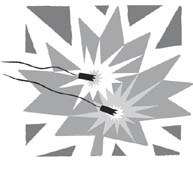P.O.V.: Canada, the Universal Declaration and tasers
P.O.V.: Canada, the Universal Declaration and tasers McGill University
User Tools (skip):
P.O.V.
Canada, the Universal Declaration and tasers
The 60th anniversary of the Universal Declaration of Human Rights is an occasion to reflect on its legacy in the world, but also more specifically in Canada. Despite a tendency to view international human rights as mostly of relevance for the rest of the world, the Declaration continues to have direct and almost daily influence on issues that are at the heart of Canadian concerns.

TZIGANE
One recent and relatively little noticed instance involves UN pronouncements on the use of taser guns. Perhaps no issue of police violence has made more headlines in Canada in recent years than the death of Polish immigrant Robert Dziekanski in Vancouver airport. Less known is the fact that the Committee Against Torture, a UN body that monitors the international Torture Convention to which Canada is party (and by which it is therefore bound), recently expressed worries that the use of tasers might amount to torture.
This is a more complex issue than it may seem. That tasers inflict severe pain is attested. However, not all infliction of pain, even relatively severe, is torture. Interpretations of the Convention Against Torture clearly suggest that pain suffered incidentally to a lawful arrest would not be considered torture. The crucial question is whether the pain inflicted was more than was strictly necessary to proceed to a lawful arrest.
This is a question whose answer will, by necessity, depend on the circumstances of each case as well as the availability of other, less painful means. Obviously, if a taser is repeatedly used against someone bound to a chair, then there is no doubt that torture is going on. But this is not a feature inherent in the use of tasers. It is about how tasers are occasionally wrongly used.
Indeed, many of the cases in which tasers have provoked outrage were cases where they have been used abusively. When a student asked U.S. Senator John Kerry a question at a recent gathering in Florida, he was tasered apparently after refusing to comply with an attempt to remove him. That there are abusive uses of tasers suggests that there will be cases where tasers have been used as a last resort, reasonably, and where the pain inflicted will be relatively less or comparatively short-lived in relation to other modes of arrest (there is certainly a case in favour of tasers as opposed to being beaten up or shot at by police).
One intriguing question is whether one can make the case that tasers are by nature weapons that are particularly prone to wrongful use, possibly because of their ease of use, and maybe because of the feeling of power they can create in those that use them. A related argument is that tasers do not allow for much gradation. There is generally little in terms of physical manifestation that separates a tense confrontation from the sudden infliction of excruciating electricity induced pain.
Having said that, the most solid arguments against widespread use of tasers relate not so much to the pain caused as the potential risk of loss of life or serious injury, a risk that should be regularly re-evaluated. Again, however, in a world where we accept that arrests may need to be made, may be resisted and may require a degree of controlled police violence, tasers will have to be evaluated in relation to other available means.
The value of a torture committee report—one among dozens of UN mechanisms dealing with human rights issues—lies not so much in its ability to solve such issues, as to raise them in a sustained normative way. The committee report is a call for prudence, a reminder that the principal criterion to evaluate police tools is not how they minimize inconvenience to law enforcement personnel, but the extent to which they are respectful of fundamental rights.
What is at stake is a transnational dialogue that can allow us to detect emerging human rights problems, establish comparisons and spread best international practice. As new techniques of control and disciplining emerge, so will human rights, laws and protocols have to adapt. International human rights laws can be a catalyst for these changes. That is the enduring legacy of the Universal Declaration, in Canada as elsewhere.
Frédéric Mégret is an Assistant Professor of Law and the Canada Research Chair on the Law of Human Rights and Legal Pluralism. December 10th is International Human Rights Day, organized annually by the United Nations to mark the day on which, in 1948, it adopted the Universal Declaration of Human Rights, whose principal drafter was McGill law professor John Humphrey.

